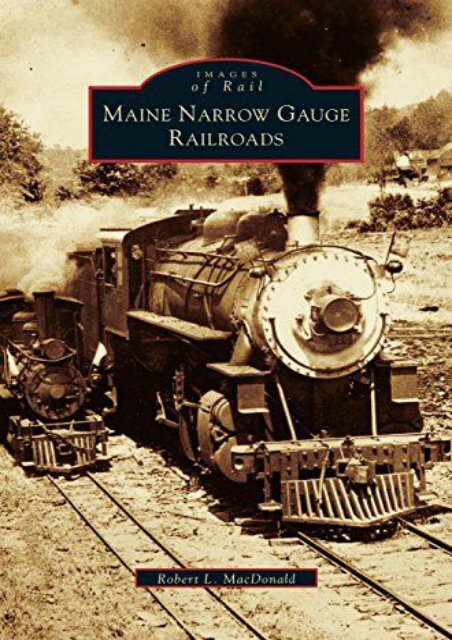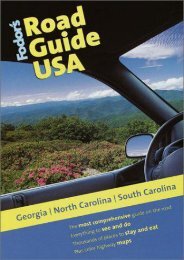Maine Narrow Gauge Railroads
Maine Narrow Gauge Railroads
Maine Narrow Gauge Railroads
Create successful ePaper yourself
Turn your PDF publications into a flip-book with our unique Google optimized e-Paper software.
<strong>Maine</strong> <strong>Narrow</strong> <strong>Gauge</strong> <strong>Railroads</strong> (Robert L MacDonald) The narrow gauge railroad arrived in the United States in the late nineteenth century. Based on the Welsh two-foot gauge, the American narrow gauge was expanded by railroad engineers to a three-foot gauge that became the standard track width for narrow gauge railroads in the United States. <strong>Maine</strong>, however, adopted the two-foot gauge that was developed by George E. Mansfield in Massachusetts. The narrow track width was ideally suited to the mountainous terrain, and the maneuverability of the trains proved highly beneficial to companies and passengers traveling to remote locations. The narrow gauge railroad served <strong>Maine</strong> for over fifty years until the early 1940s.<strong>Maine</strong> <strong>Narrow</strong> <strong>Gauge</strong> <strong>Railroads</strong> is a comprehensive pictorial record of the history of the narrow gauge railroad in <strong>Maine</strong>. From the one-hundred-twelve-mile Sandy River and Rangeley Lakes Railroad to the five-mile Kennebec Central, <strong>Maine</strong> <strong>Narrow</strong> <strong>Gauge</strong> <strong>Railroads</strong> features the toylike miniature trains of <strong>Maine</strong> as they appeared at different stages in their history. The Bridgton and Harrison Railroad, the Monson Railroad, and the Wiscasset, Waterville and Farmington Railway lines are documented within, as well as the current restoration projects that are under way.<br />
<strong>Maine</strong> <strong>Narrow</strong> <strong>Gauge</strong> <strong>Railroads</strong>
<strong>Maine</strong> <strong>Narrow</strong> <strong>Gauge</strong> <strong>Railroads</strong>
















